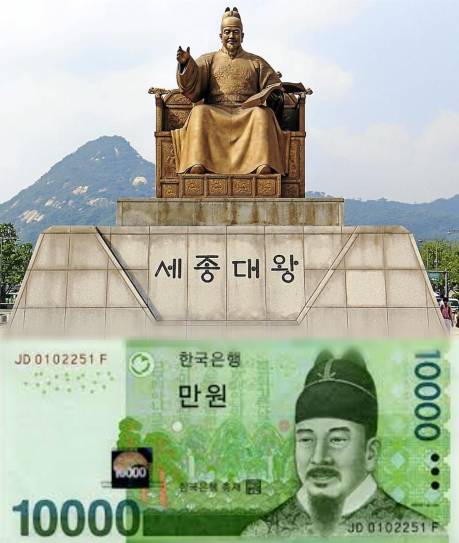King Sejong (1397-1450) was the fourth king of Joseon. he is often referred to as King Sejong the Great, which holds the meaning of respect for his achievements. His last name is Lee, First name was Do, hometown is Jeonju, courtesy name is Wonjeong, and his nickname is Makdong. Temple name was Sejong, his Posthumous name is King Seong-hyo the Great, Posthumous name given by Ming Dynasty is Jiang Heon.
He was born in May 15, 1397 as the third son of King Taejong Yi Bang-won and Queen Wongyeong, He was the first king of the Joseon Dynasty who did not abdicate the throne. He was born as the third son of his father Jeong An-gun(Taejong Yi Bang-won) in Junsu Bang, Hanseong (now Tongin-dong, Jongno-gu, Seoul), and was sealed in Changnyeong-gun in the 8th year of King Taejong's reign (1408), and was promoted to Chungnyeongdaegun along with his second brother Hyoryeong Daegun in the 12th year of King Taejong's reign (1412).
Sejong liked reading as a child, one day he would read until his eyes were damaged. his eyes were severely damaged but he continued reading. Taejong Yi Bang-won had to force him to stop and take the books away, however he unintentionally found a book behind a folding screen and read the same book about 1000 times until it was worn.
In 1418 when his first brother, Yangnyeongdaegun, became a defunct prince, Sejong became a crown prince. Soon after his father Taejong Yi Bang-won, enthroned Sejong in 10/8/1418 and Taejong Yi Bang-won became a prince.
During the first four years of his reign, the father-in-law took charge of state affairs and political affairs by proxy, when his father-in-law Sim On and his aides were executed, he dismissed claims that Queen Soheon would be abolished. He appointed Kim Jong-seo and Maeng Sa-sung to conduct political affairs.
Sejong was also an outstanding king in many fields, including science and technology, art, culture and national defense. He published a book about farming to the citizens, to stabilize food supplies but when he realized most citizens could not read Classical chinese, he created Hunminjeongeum, an efficient and scientific writing system that anyone could easily learn in 1443. It was developed into Hangeul by Ju Si-gyeong in the 20th century, and is widely used today as the official Korean alphabet. October 9 is celebrated as Hangul Day, in addition he is on the 10000 won bill.

